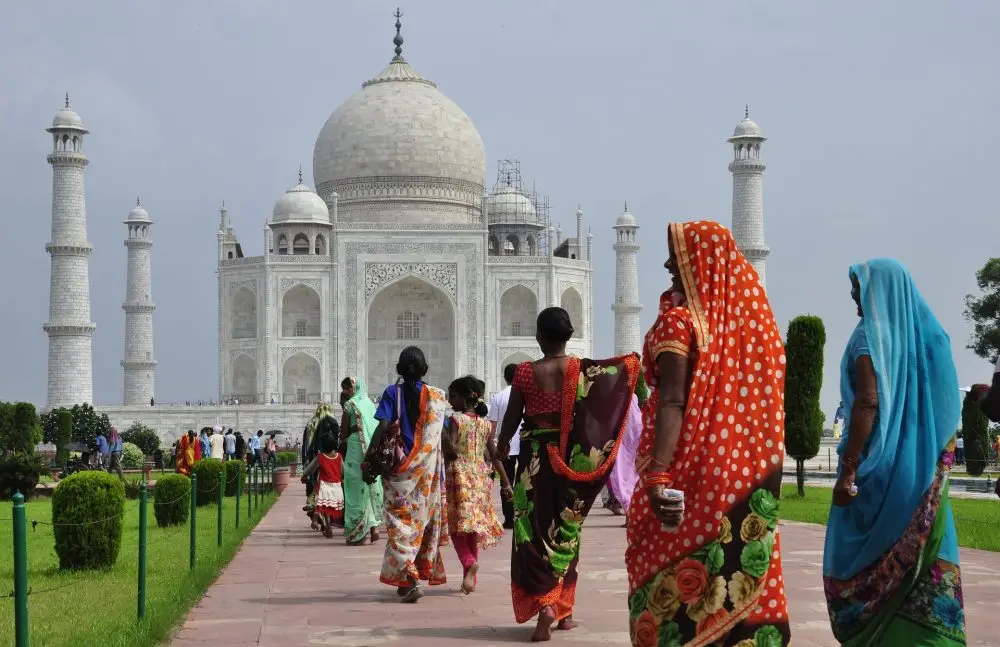Goa is not just a state on the southwest coast of India, but two completely different realities packed into one region. Some seek noisy parties, others – yoga at dawn. Some chase the lights of nightclubs, while others dream of tranquility by the water’s edge. To understand what is better for relaxation, North or South Goa, it is worth looking at them without filters and myths, and comparing not only the beaches, but also the rhythm, atmosphere, attractions, budget, and mentality of each direction.
North or South Goa: How to understand what to choose for yourself?
We are not just talking about geography, but about two different concepts of tourism. North or South Goa is a dilemma between partying and meditation, fireworks and sounds of the surf.

The lively resort area is suitable for those who crave excitement, people, improvisation. Everything here is bustling – from bars to streets. The warm side of the island is the opposite: few tourists, little noise, lots of space and tranquility. Even the resorts are built differently: in the north – compact guesthouses, in the south – fashionable Goa hotels with access to deserted beaches.
Beaches: Noise and activity versus tranquility and sunsets
The active side of the island is known for its party beaches: Arambol, Anjuna, Calangute. Here you can easily find inexpensive cafes, surfing schools, places for meditation, fire shows, festivals, musical evenings. But crowds are part of the reality.
The South – Palolem, Colva, Benaulim, and Agonda. Here are wide deserted strips of sand, peace, and endless waves. Ideal for couples, introverts, and those who just want to listen to the ocean. If choosing between North and South Goa for a family vacation, the remote areas will be quieter and safer for children.
Where to stay: Hotels and accommodation for vacation style
Accommodation in the north offers freedom of choice: from hostels and rental rooms to cheap guesthouses right by the shore. Here it is easy to find budget accommodation, especially if you are a spontaneous traveler.
In the warm part, high-class hotels and villas prevail. And although the cost may be higher, the level of service, privacy, and views completely justify the expenses.
What to see: Attractions and atmosphere
To avoid confusion, we divide the experiences into two equal parts. Here’s what to see on the noisy part of the coast:
- ruins of the Portuguese Chapora Fort overlooking the sunset;
- night market in Anjuna – a real Eastern Woodstock;
- the village of Arambol with its lake, dances, and drums on the beach;
- freak show on Anjuna Beach;
- Shantadurga Temple – a cult place for pilgrims.
The resort area with an emphasis on comfort offers a completely different mood:
- ancient Mahadeva Temple in Tamdi Surla – a real forest oasis;
- kayaking in the bays of Palolem;
- quiet colonial village of Loutolim;
- white churches of Margao;
- butterflies at Butterfly Beach, which can only be reached by water.
When choosing what to see in Goa, make a choice not based on quantity, but on the quality of experiences.
Entertainment: music, festivals, meditations, and retreats
On the side with nightlife and parties, you will not be bored. Trans festivals, beach and bar parties, numerous cafes with live music every evening are held here.
The calm part of the territory is more suitable for yoga, retreats, art therapies, and culinary masterclasses. A place where “entertainment” gains depth.
If you are concerned about nightlife, your choice is likely to lean towards the north. And if the priority is internal recharge, silence, and nature, then look for a ticket to the south.
North or South Goa: where will a budget tourist go, and where will one have to splurge?
It’s simple: North or South Goa differ primarily in budget. The upper part of the region is about affordability. Even in the peak season, you can afford a vacation in Goa without serious expenses. Budget guesthouses, inexpensive street food, bike rentals for a pittance, and free beach parties – all make the north an ideal option for those who want maximum experiences with minimal spending.
The calm part of the territory, on the contrary, is suitable for those willing to pay for comfort. Here, hotel prices by the sea, transfers, restaurant meals, and additional services are higher. But the level is different: well-kept areas, clean beaches, unobtrusive service, privacy, and peace. The coastal area is not a place for wild relaxation but a territory for recovery, romance, and tranquility.
Both options are good, the main thing is that the chosen style of vacation matches your inner rhythm.
Visual comparison: where to look for what?
If you still haven’t decided whether to choose North or South Goa for your vacation, it’s worth looking at the key differences between the regions and, most importantly, at your own expectations from the holiday.
Life is bustling in North Goa. The place is attractive to youth, freelancers, and all who love the rhythm of freedom. Accommodation and food are cheaper here, with many street cafes, lively beaches, parties, and unconventional people. The upper part of the region is chaos with enchanting charm, where it’s easy to make acquaintances and get lost in dances until dawn.
The lower part of the region, on the other hand, is about tranquility, nature, and seclusion. There are fewer tourists, cleaner beaches, spacious bungalows, and a calming atmosphere. It costs more but offers a different format – meditative, family-oriented, or romantic. Those who are tired of noise, love comfort, and leisurely walks along the ocean come here.
It’s less advisable to rely on others’ reviews. They won’t tell you the most important thing: about your mood, travel goals, and inner desires. Want excitement, new faces, and carefree atmosphere? Then the path lies to the dynamic part of the region. Dreaming of silence, sunsets in solitude, and relaxation without haste – the less crowded resort area awaits you.

North or South Goa: conclusions
The question of North or South Goa is not about maps and kilometers but about feelings. One is painted with neon signs and the smell of spices in the streets. The other is drawn with palm shadows, sunrises, and sea breezes.
If being in the midst of events, trying new things, and socializing are important to you, boldly choose the side with nightlife and parties. If you are tired, seeking silence, long walks, and meditative waves, your path is to the south. The island offers a choice, and that is its main charm.
 en
en  ar
ar  de
de  es
es  fr
fr  nl
nl  hi
hi  it
it  pt
pt  el
el 



